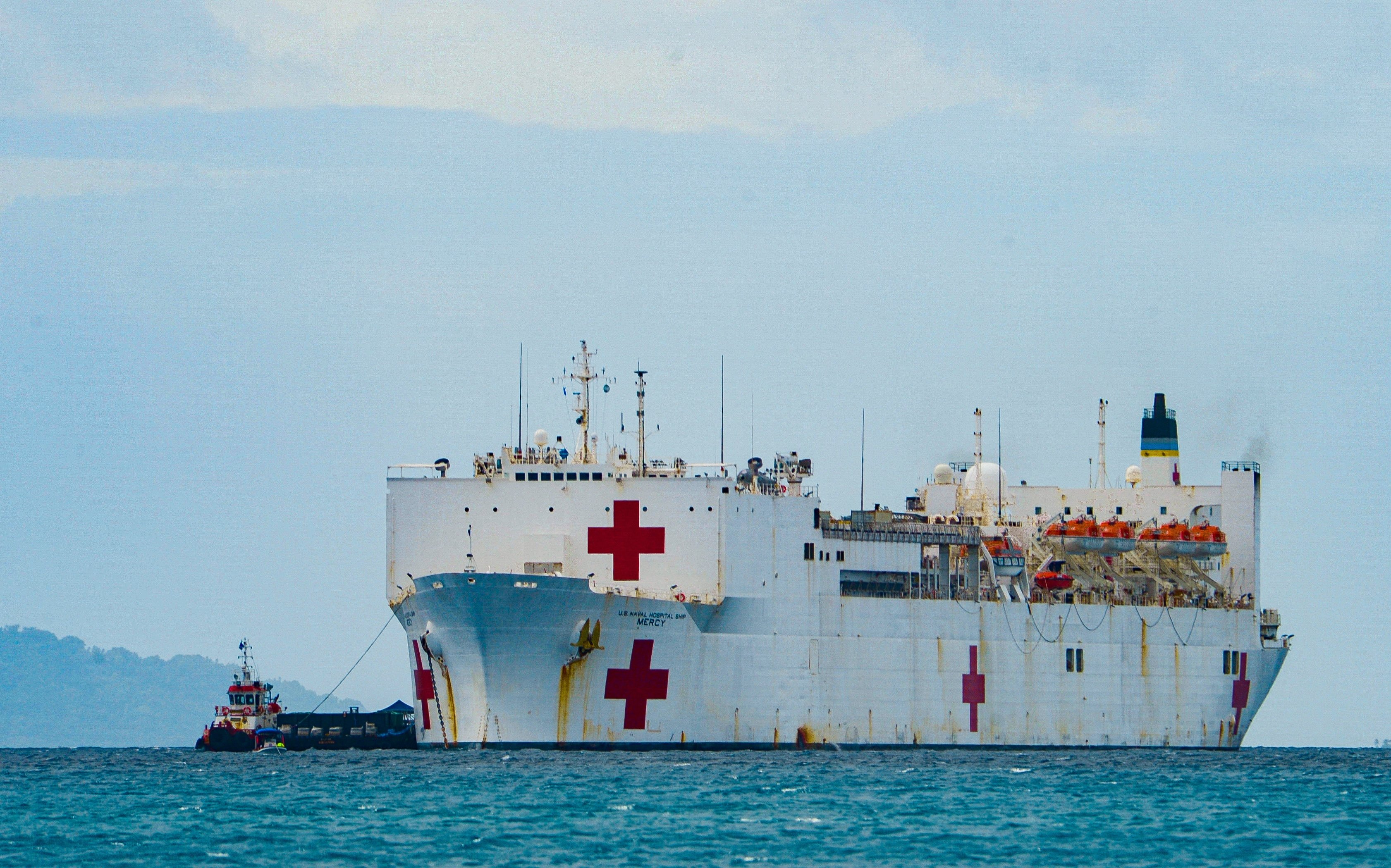
The U.S. Navy and partner nations wrapped up this year’s Pacific Partnership humanitarian and disaster relief mission on Sunday in the state of Chuuk, Federated States of Micronesia, with mission leader Capt. Brian Quin stating the partnership continues to further interoperability and multinational cooperation to build regional resilience in HADR situations.
In a Thursday call with regional media, Quin, Mission Commander for Pacific Partnership 24-1, stated that the missions are at the request of the host nations, with the Navy helping build a plan that suits four lines of efforts: medical, engineering, HADR and host-nation outreach events. “Our focus is on enhancing capabilities and partnerships with our host nations,” he said.
According to Quin, approximately 800 U.S. Navy, Army, Marine Corps, Air Force, Coast Guard, government civilians and nongovernment agencies, along with military personnel from Australia, the United Kingdom, Japan, New Zealand and Germany, carried out the mission. The majority were embarked on hospital ship USNS Mercy (T-AH-19), which spearheaded the mission. The mission began on Oct.10 last year and will formally conclude in mid-February, when Mercy returns home to San Diego, stated Quin.
Capt. Jeffrey Feinberg, commanding officer of Mercy, said the multinational mix included German diving medical officers trained in hyperbaric medicine, a British military team of dental specialists, a Japanese neurologist and a New Zealand medical officer. Feinberg said New Zealand also provided helicopter support and interoperability landings on Mercy, with the two their NH-90s assigned a joint Australian, New Zealand and Fijian task force supporting the Royal Solomon Islands Police Force (RSIPF) during the 2023 Pacific Games hosted by the Solomon Islands. The Pacific Partnership team, which was also there on its second mission stop, augmented the local medical infrastructure during the games. Navy release stated the medical team also boosted the capacity of Australian security forces by providing 14 days of continuous role II/III surgical coverage to a 500-person multinational task force.
Quin said that five mission stops were carried out in the following order: the Marshall Islands, the Solomon Islands, the state of Pohnpei, Federated States of Micronesia, Palau and Chuuk, Federated States of Micronesia. In the Marshall Islands, a team of 13 medical professionals traveled to Aur Atoll embarked on the Marshall Islands Hospital Ship Liwatoon Mour to participate in a tuberculosis eradication campaign on Aur Atoll. “This was the first time in Pacific Partnership history that our medical professionals embarked on a host-nation medical vessel. The team, alongside Marshallese medical professionals, tested all those living on Aur Atoll for tuberculosis. This initiative held significant importance given that the Marshallese people grapple with one of the highest tuberculosis rates globally,” said Quin.
Due to Pohnpei’s inability to accommodate a ship of Mercy’s size, a smaller group of 75 members flew in to work with local professionals at community health engagements. In Palau, Pacific Partnership hosted the One Health conference, an international public health conference on animal-to-human disease outbreak control. The three-day conference was attended by 60 stakeholders from the United States, Palau and other Pacific Island nations. In Chuuk, the final stop, 12 days of medical, engineering, host-nation outreach efforts and HADR capacity building were carried out.
Quin stated that as of Thursday, the mission, in collaboration with partners and host nations, had completed 300 surgeries and 7,000 dental procedures; distributed more than 6,000 prescription eyeglasses, accumulated nearly 4,000 manhours in construction projects, and entertained crowds with 38 band concerts as part of its local community outreach and relationship-building efforts.
Feinberg said that Mercy’s size and capability as a fully functional hospital means there were few limitations on the ship’s medical operations, other than rough seas. The team, however, found a way to mitigate that challenge. “We’re doing surgeries sometimes in people who are severely vision-impaired, and some have balance issues, and so transiting in the sea states can be a challenge for them, and so we actually introduced a specific transport team that helped safely move the patients. And so far we’ve had no issues with any of the patient transfers despite some pretty, pretty aggressive seas,” said Feinberg.
Quin said that while Mercy is often the ship associated with Pacific Partnership, every other year the partnership is carried out with other ships. The 2023 mission was carried out with the dock landing ship USS Pearl Harbor (LSD-52) and littoral combat ship USS Jackson (LCS-6). Quin said these ship carry out the same efforts as Mercy, “but just because you don’t see the big white ship with the big red cross doesn’t mean Pacific Partnership isn’t doing great things across the Indo-Pacific region to deepen those enduring bonds of friendship and to support our common values of a free and open Indo-Pacific.”





